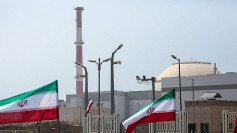Combat pilots of the Japan Air Self-Defense Force (JASDF) flying Mitsubishi F-15J air superiority fighters will be trained, and their planes re-equipped, to attack and sink any warships of the China People's Liberation Army Navy (PLAN) that stray into Japanese territory.
JASDF operates some 155 F-15J fighters, its main interceptors. The F-15J is the Japanese version of the venerable McDonnell Douglas F-15 Eagle twin-engine tactical fighter that entered U.S. Air Force service in 1976.
Produced by Mitsubishi Heavy Industries, the F-15J equips seven front-line JASDF squadrons at four air bases. This fighter is responsible for intercepting warplanes of the People's Liberation Army Air Force (PLAAF) that fly too close to Japanese airspace. The F-15Js accounted for the bulk of the 947 intercepts of PLAAF aircraft in 2019.
F-15J pilots will be trained in low-level, air-ship missions under a program called "Japan Super Interceptors" (JSI). At least 98 F-15Js will be transformed into the F-15JSI version under the $4.5 billion program approved in 2019.
JSI will see the addition of sophisticated anti-ship missiles and their associated electronic systems to the F-15JSI aircraft. Among the new electronic gear to outfit the F-15JSI are the AN/APG-82(v)1 electronically-scanned array radar; new electronic-warfare equipment; GPS and radios.
F-15JSI will deploy some of the most advanced U.S.-made anti-ship missiles. One of these new missiles is the AGM-158B Joint Air-to-Surface Standoff Missile Extended Range (JASSM-ER) low observable standoff air-launched cruise missile.
JASSM-ER has a range of close to 1,000 km and carries a 450 kg armor-piercing warhead. JASSM-ER can also be used to attack ground targets. It costs some $1.4 million each.
The other is a version of this missile, the AGM-158C LRASM (Long Range Anti-Ship Missile), is a stealthy anti-ship cruise missile equipped with a new seeker. LRASM's range is classified.
Military analysts say Japan's strategy in a war against China will be to keep PLAN penned inside maritime chokepoints between the Japanese archipelago, Taiwan and the Philippines. The aim of this strategy is to prevent PLAN surface warships, especially her aircraft carriers, from reaching the open sea in the Pacific Ocean. The F-15JSIs armed with LRASMs will increase by a third the number of warplanes JASDF can attack PLAN's surface warships.
This strategy, however, envisions the JASDF's Mitsubishi F-2 multirole fighters based on the Lockheed Martin F-16 Fighting Falcon, and Lockheed Martin F-35 stealth attack fighters, as the main warship killers.






